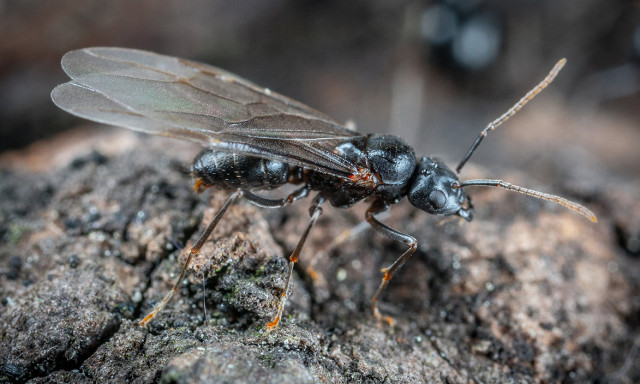Groups of social insects, including ants, increase their efficiency through division of labour and good communication.
Communicating where food can be found makes for efficient feeding of the colony. Ants use pheromone (odour) trails in foraging for food. Successful foragers deposit pheromone as they return to the nest, with the trail gaining in strength as more and more workers add pheromone to it. When the food has run out, returning foragers don’t leave the pheromone and the pheromone trail fades and the trail of ants stops.
The pheromone trail may only provide the route to food, whilst recruitment of additional foragers is caused by other behaviours, such as dances or direct physical contact in the nest. It is the ant antennae that are used to detect the pheromones. Ant antennae can detect a wide range of chemical signals and ants can be observed touching each other’s antennae together, and it is thought they are transferring information by chemical signals and touch. Some think some ants may use a Morse code-like vibration when touching antennae to pass on information.
Passing ants may also appear to ‘kiss’ each other. They are passing food from one to the other. This is known as trophallaxis. In the nest this is how the foraging workers distribute food to other workers, larvae and queens. This sharing of food means that not all the ants in the colony must go in search of food. Indeed, most of the colony stay in the nest and tend to the needs of the queens, larvae and eggs, and keep the nest in order. It is only a small proportion of the colony that are sent out in search of food (scouts) or to follow pheromone to marked food and to bring it back to the nest. It is usually the older workers that become the foragers.
It is now thought that as well as passing food from one to another in trophallaxis, there is a transfer of immunity to disease. Ants that have encountered bacteria or fungi that could harm them develop anti-microbial peptides as part of their immune system and these can be transferred during trophallaxis, passing on the immunity in something akin to a vaccination of the ant it is feeding.
The multiple signals used in ant communication provide shared information and enable the colony (or system) to be more responsive and better regulated, so that it functions more efficiently.
David Brittain
Kiwicare


